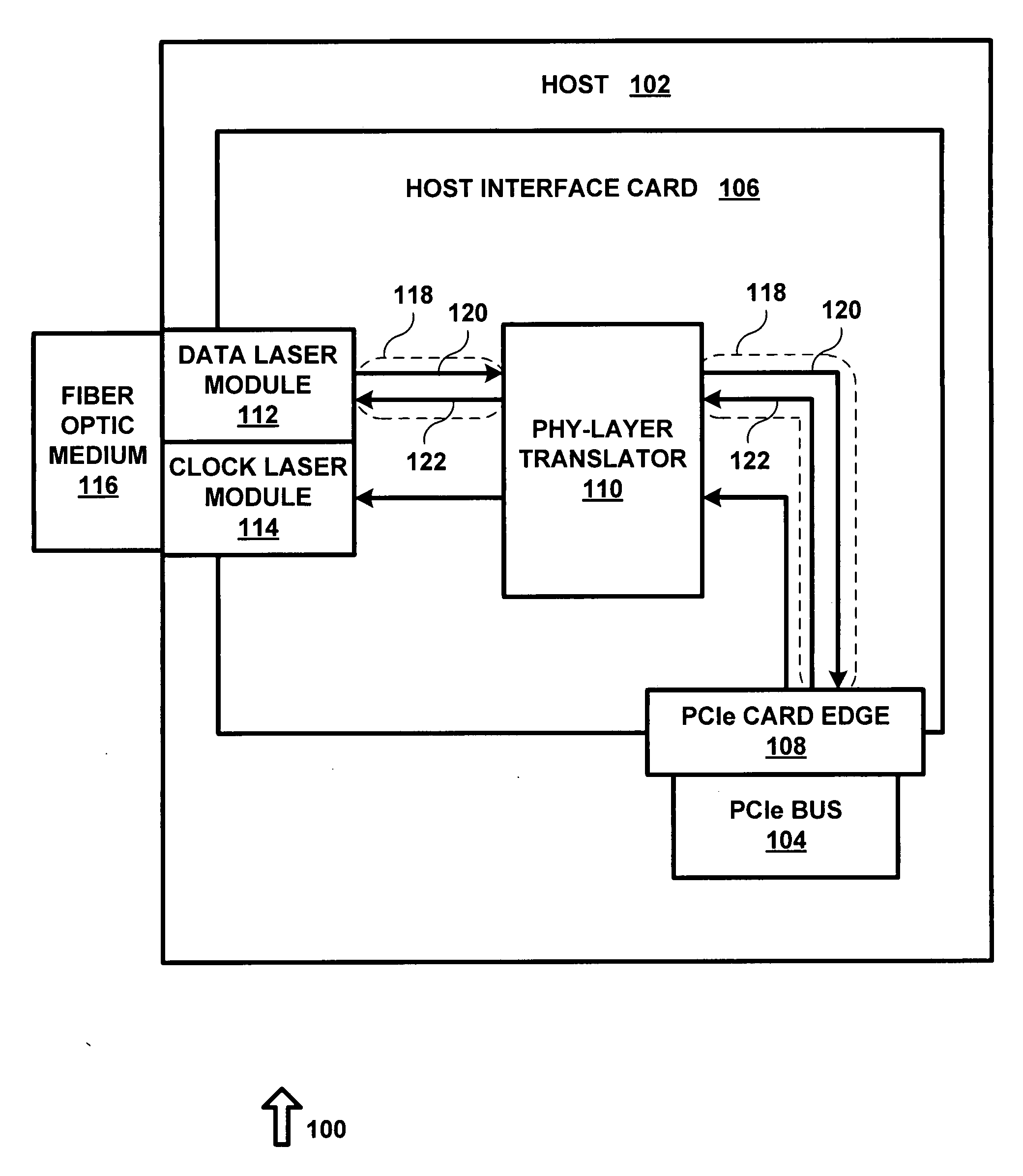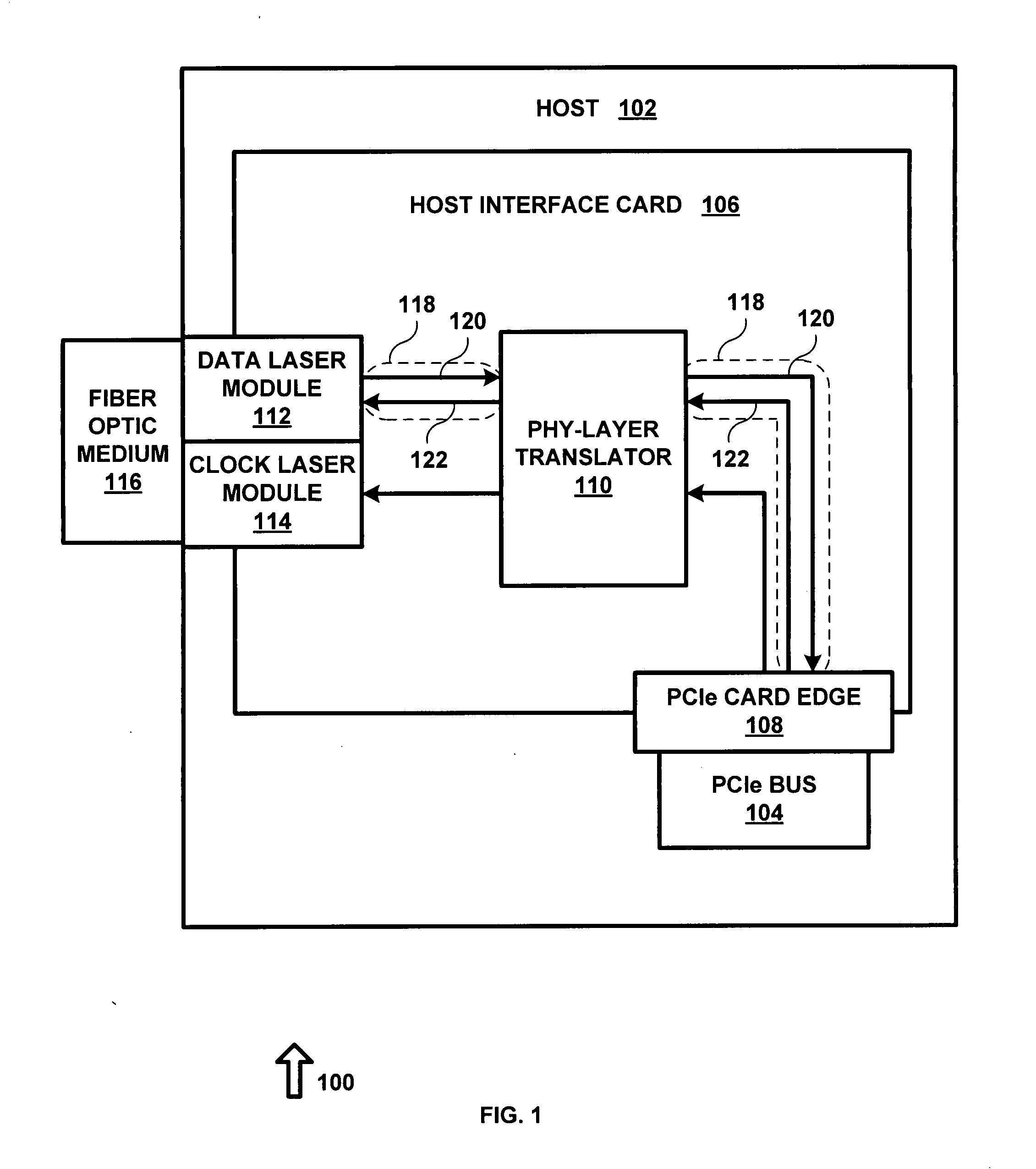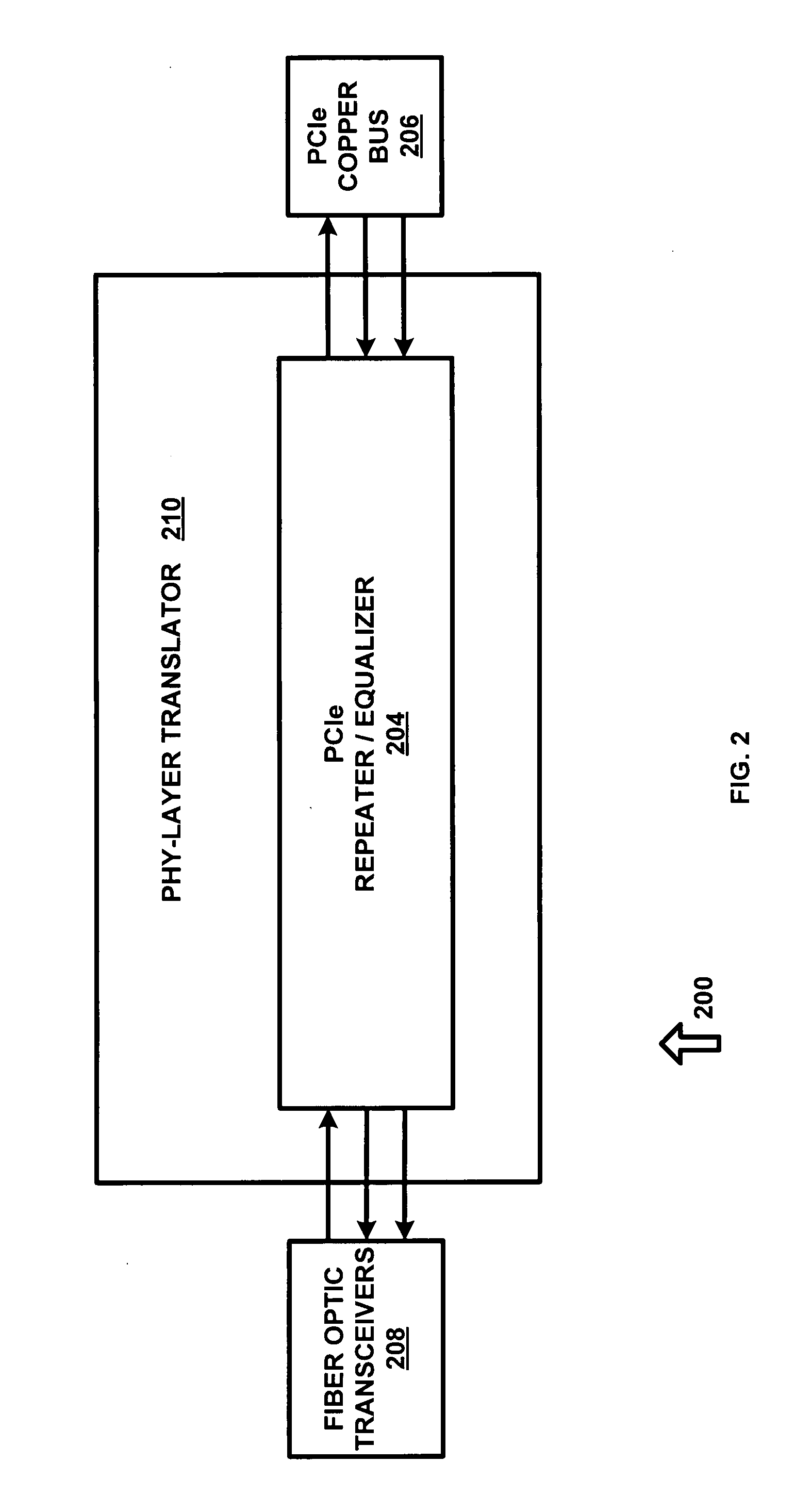System and method for expanding PCIe compliant signals over a fiber optic medium with no latency
- Summary
- Abstract
- Description
- Claims
- Application Information
AI Technical Summary
Benefits of technology
Problems solved by technology
Method used
Image
Examples
Embodiment Construction
[0018]The present invention utilizes a 2.5 Gbps ×2 Lane Serial PCIe repeater / equalizer IC, part number P12EQX4402, manufactured by Pericom Semiconductor of San Jose, Calif. The repeater / equalizer IC was designed to propagate signals across backplanes and extend copper on a circuit board. The repeater / equalizer IC was not designed to interface fiber optic transceivers, or rather prepare a signal to be converted from electronic data into light data. This chip is one of many such chips that do this; herein use of this chip in this method as a “PHY-layer translator.”
[0019]There are two general categories of PCIe compliant signals, there are high speed signals—which contain both clock and data, and there are low speed signals—such as a reset signal. Low speed signals are either there, or not there, much like direct current (DC) signals. The high speed signals are directed toward a high speed converter. The low speed signals are directed toward a low speed converter. In one exemplary embo...
PUM
 Login to View More
Login to View More Abstract
Description
Claims
Application Information
 Login to View More
Login to View More - R&D
- Intellectual Property
- Life Sciences
- Materials
- Tech Scout
- Unparalleled Data Quality
- Higher Quality Content
- 60% Fewer Hallucinations
Browse by: Latest US Patents, China's latest patents, Technical Efficacy Thesaurus, Application Domain, Technology Topic, Popular Technical Reports.
© 2025 PatSnap. All rights reserved.Legal|Privacy policy|Modern Slavery Act Transparency Statement|Sitemap|About US| Contact US: help@patsnap.com



